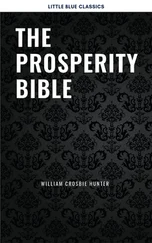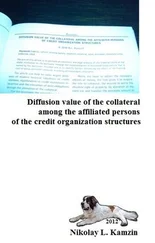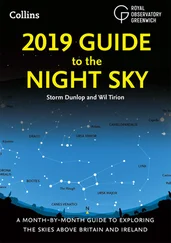auxiliary.A special kind of verb which conveys information relevant to the truth of the clause, including tense, mood,and negation: She doesn’t love you; I am resting; Bob was criticized; The train has left the station; You should call; I will survive.
backshift.Changing the tense of a verb (usually in indirect or reported speech) to match the tense of the verb of speaking or believing: Lisa said that she was tired (compare with Lisa said, “I am tired . ” ) Traditionally called sequence of tenses.
Cambridge Grammar. The Cambridge Grammar of the English Language , a 2002 reference book written by the linguists Rodney Huddleston and Geoffrey Pullum in collaboration with thirteen other linguists. It uses modern linguistics to provide a systematic analysis of virtually every grammatical construction in English. The terminology and analyses in this book are based on the Cambridge Grammar.
case.The marking of a noun to indicate its grammatical function,including nominative case (for subjects), genitive case (for determiners, including possessives), and accusative case (for objects and everything else). In English, case is marked only on pronouns (nominative I, he, she, we, and they; accusative me, him, her, us, and them; and genitive my, your, his, her, our, and their ), except for genitive case, which can be marked with the suffixes ’s on singular noun phrases and s’ on plural ones.
classic prose.A term introduced by the literary scholars Francis-Noël Thomas and Mark Turner in their 1994 book, Clear and Simple as the Truth, to refer to a prose style in which the writer appears to direct the reader’s attention to an objective, concrete truth about the world by engaging the reader in conversation. It contrasts with practical, self-conscious, contemplative, oracular, and other styles.
clause.The phrase type that corresponds to a sentence, whether it stands alone or is embedded in a larger sentence: Ethan likes figs; I wonder whether Ethan likes figs; The boy who likes figs is here; The claim that Ethan likes figs is false.
coherence connective.A word, phrase, or punctuation mark that signals the semantic relation between a clause or passage and one that preceded it: Anna eats a lot of broccoli, because she likes the taste. Moreover, she thinks it’s healthy. In contrast, Emile never touches the stuff. And neither does Anna’s son.
complement.A phrase that is allowed or required to appear with a head, completing its meaning: smell the glove; scoot into the cave; I thought you were dead; a picture of Mabel; proud of his daughter.
conjunction.The traditional term for the grammatical category of words that link two phrases, including coordinating conjunctions ( and, or, nor, but, yet, so ) and subordinating conjunctions ( whether, if, to ). Following the Cambridge Grammar , I use the terms coordinator and subordinatorinstead.
coordinate.One of two or more phrases in a coordination.
coordination.A phrase consisting of two or more phrases with the same function, usually linked by a coordinator: parsley, sage, rosemary, and thyme; She is poor but honest; To live and die in LA; Should I stay or should I go?; I came, I saw, I conquered.
coordinator.The grammatical categoryof words that link two or more phrases with the same function, such as and, or, nor, but, yet, and so.
definiteness.A semantic distinction marked by the determinerof a noun phrase, indicating whether the content of the head noun is sufficient to identify the referent in context. If I say I bought the car (definite), I am assuming that you already know which car I’m talking about; if I say I bought a car (indefinite), I’m introducing it to you for the first time.
denominal verb.A verb derived from a noun: He elbowed his way in; She demonized him.
determinative.The name used in the Cambridge Grammar for the grammatical categoryof words that can function as determiners,including articlesand quantifiers.
determiner.The part of a noun phrase that helps determine the referent of the head noun, answering the question “Which one?” or “How many?” The determiner function is carried out by articles( a, an, the, this, that , these, those ), quantifiers( some, any, many, few, one, two, three ), and genitives( my mother; Sara’s iPhone ). Note that determineris a grammatical function; determinativea grammatical category.
diction.The choice of words. Not used here to refer to clarity of enunciation.
direct object.The object of the verb (or, if the verb has two objects, the second of the two), usually indicating the entity that is directly moved or affected by the action: spank the monkey; If you give a muffin to a moose; If you give a moose a muffin; Cry me a river.
discourse.A connected sequence of sentences, such as a conversation, a paragraph, a letter, a post, or an essay.
ellipsis.Omission of an obligatory phrase that can be recovered from the context: Yes we can __! Abe flossed, and I did __ too; Where did you go? __To the lighthouse.
factual remoteness.Whether a proposition refers to a remote possibility, namely a state of affairs that is untrue, highly hypothetical, or extremely improbable. The difference between If my grandmother is free, she’ll come over (an open possibility) and If my grandmother had wheels, she’d be a trolley (a remote possibility).
foot.A sequence of syllables pronounced as a unit and with a specific rhythm: The SUN / did not SHINE. / It was TOO / wet to PLAY.
genitive.The technical term for what is loosely called “possessive” case, namely the case of a noun which functions as a determiner, such as Ed’s head or my theory . Marked in English by the choice of certain pronouns ( my, your, his, her, their, and so on) and, with all other noun phrases, the suffix ’s or s’: John’s guitar; The Troggs’ drummer.
gerund.The form of the verb with the suffix –ing , often functioning like a noun: His drinking got out of hand.
government.A traditional grammatical term covering the ways in which the head of a phrase may determine the grammatical properties of other words in the phrase, including agreement, case-marking, and the selection of complements.
grammatical category.A class of words that are interchangeable in their syntactic positions and in the way they are inflected: noun, verb, adjective, adverb, preposition, determinative(including articles), coordinator, subordinator, interjection. Also called a part of speech.
grammatical function.The role that a phrase plays inside a larger phrase, including subject, object, predicate, determiner, head, complement, modifier, and adjunct.
Читать дальше












